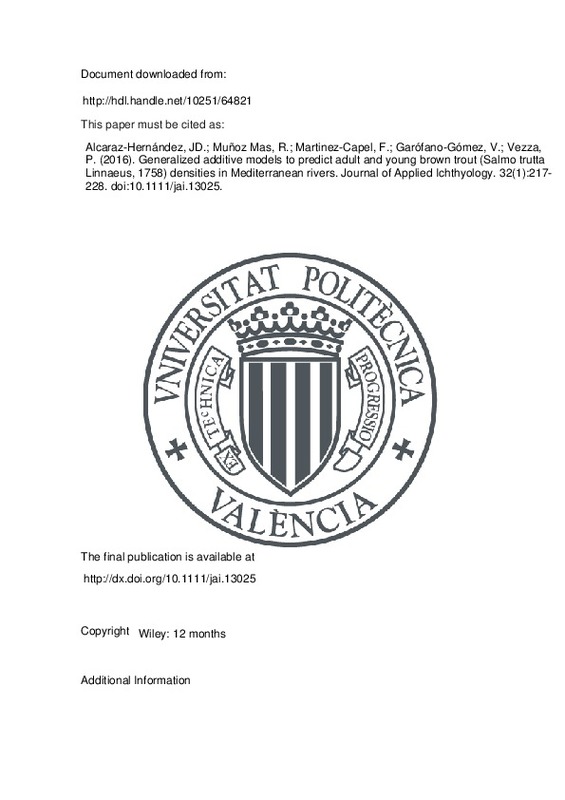JavaScript is disabled for your browser. Some features of this site may not work without it.
Buscar en RiuNet
Listar
Mi cuenta
Estadísticas
Ayuda RiuNet
Admin. UPV
Generalized additive models to predict adult and young brown trout (Salmo trutta Linnaeus, 1758) densities in Mediterranean rivers
Mostrar el registro completo del ítem
Alcaraz-Hernández, JD.; Muñoz Mas, R.; Martinez-Capel, F.; Garófano-Gómez, V.; Vezza, P. (2016). Generalized additive models to predict adult and young brown trout (Salmo trutta Linnaeus, 1758) densities in Mediterranean rivers. Journal of Applied Ichthyology. 32(1):217-228. https://doi.org/10.1111/jai.13025
Por favor, use este identificador para citar o enlazar este ítem: http://hdl.handle.net/10251/64821
Ficheros en el ítem
Metadatos del ítem
| Título: | Generalized additive models to predict adult and young brown trout (Salmo trutta Linnaeus, 1758) densities in Mediterranean rivers | |
| Autor: | Alcaraz-Hernández, Juan Diego Muñoz Mas, Rafael Vezza, Paolo | |
| Entidad UPV: |
|
|
| Fecha difusión: |
|
|
| Resumen: |
Habitat suitability models (HSM) are concerned with the abundance or distribution of species as a consequence of interactions with the physical environment. Generalized Additive Models (GAMs) were used to model brown trout ...[+]
|
|
| Palabras clave: |
|
|
| Derechos de uso: | Reserva de todos los derechos | |
| Fuente: |
|
|
| DOI: |
|
|
| Editorial: |
|
|
| Versión del editor: | http://dx.doi.org/10.1111/jai.13025 | |
| Código del Proyecto: |
|
|
| Agradecimientos: |
This study was partially funded by the Generalitat Valenciana (Conselleria de Territorio y Vivienda) and the Spanish Ministry of Economy and Competitiveness with the project SCARCE (Consolider-Ingenio 2010 CSD2009-00065). ...[+]
|
|
| Tipo: |
|







![[Cerrado]](/themes/UPV/images/candado.png)


